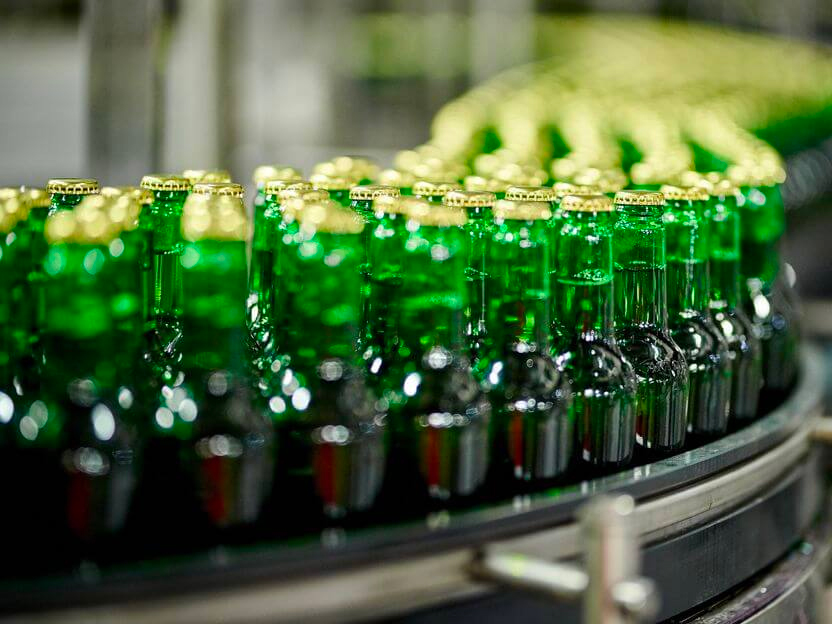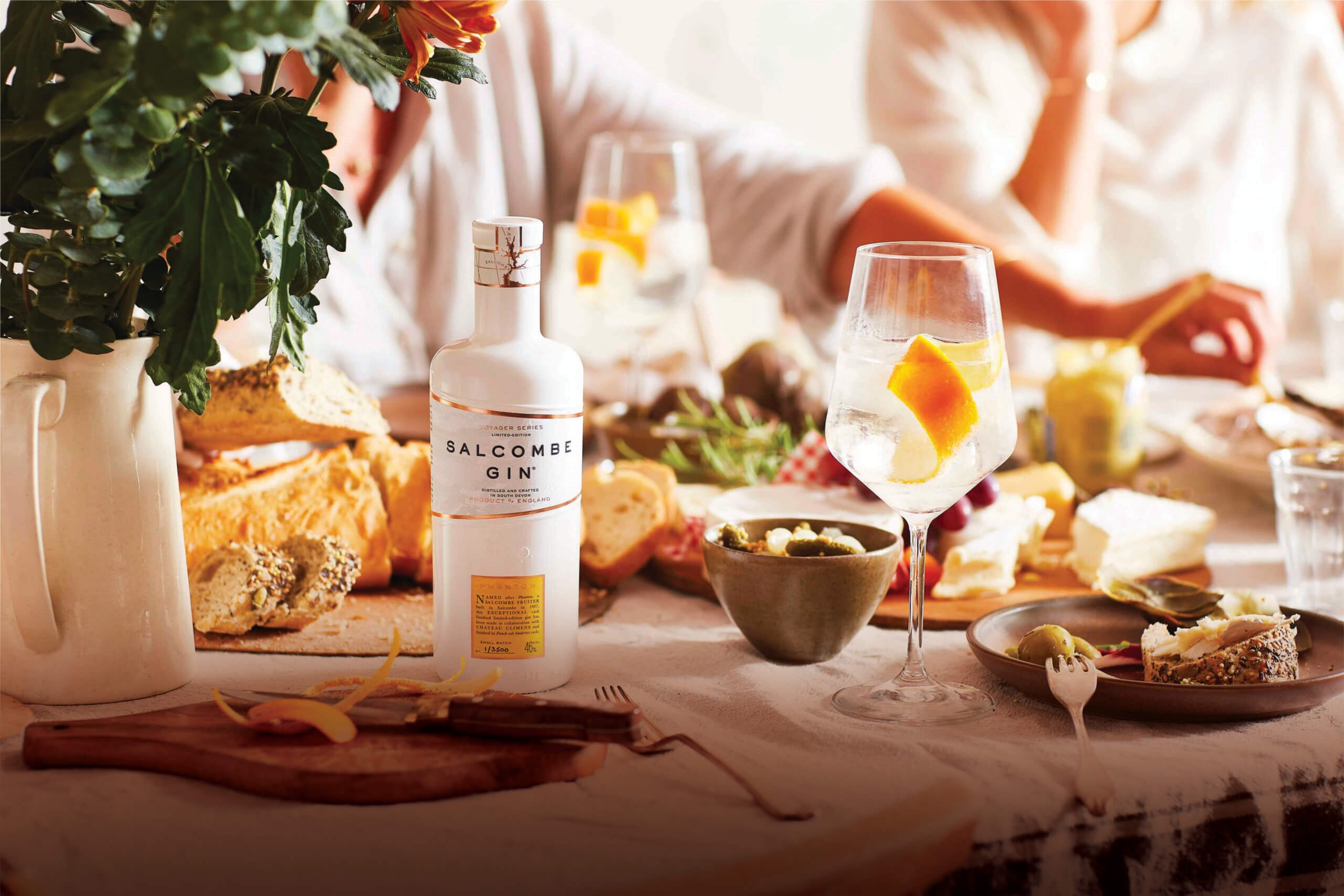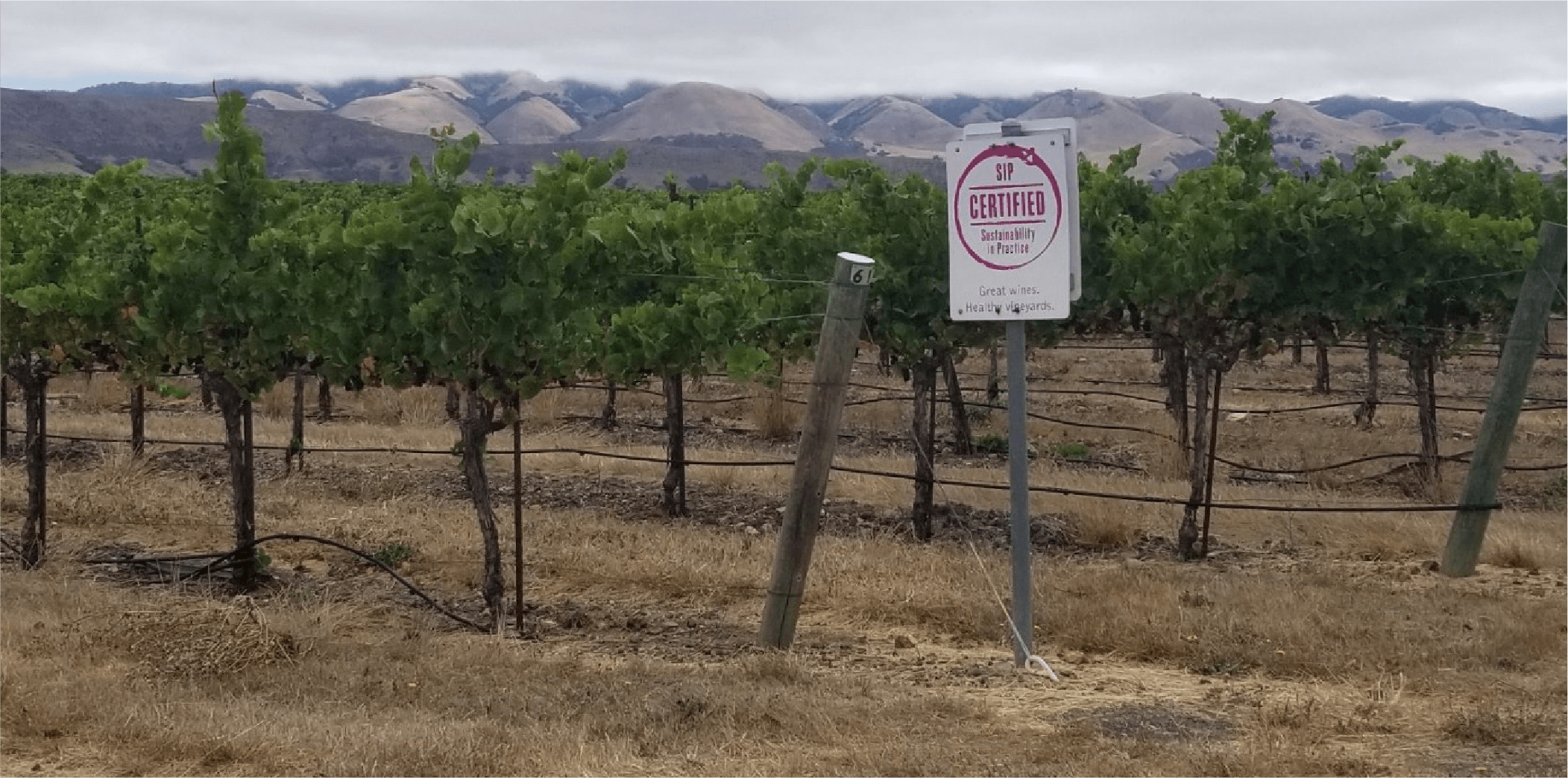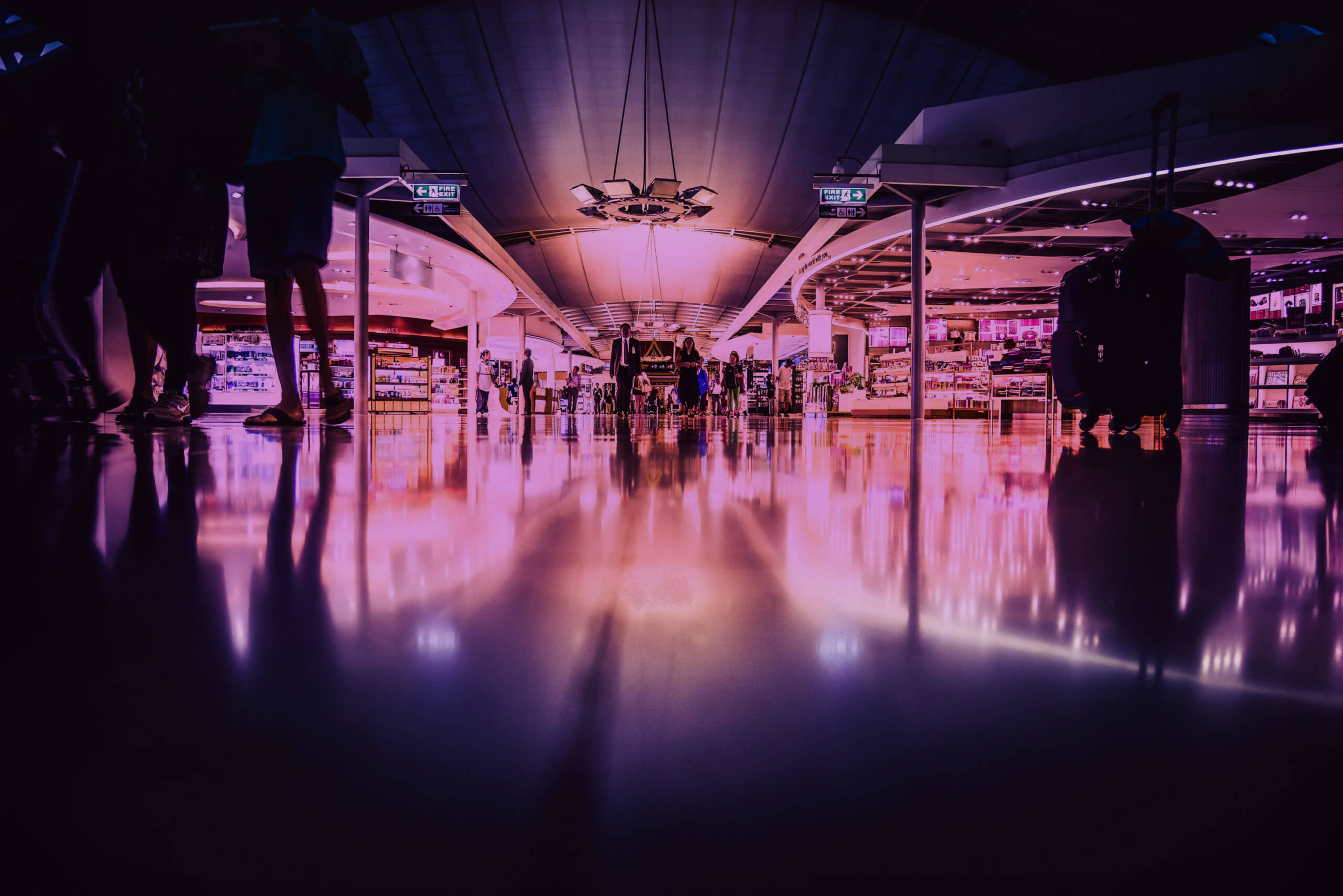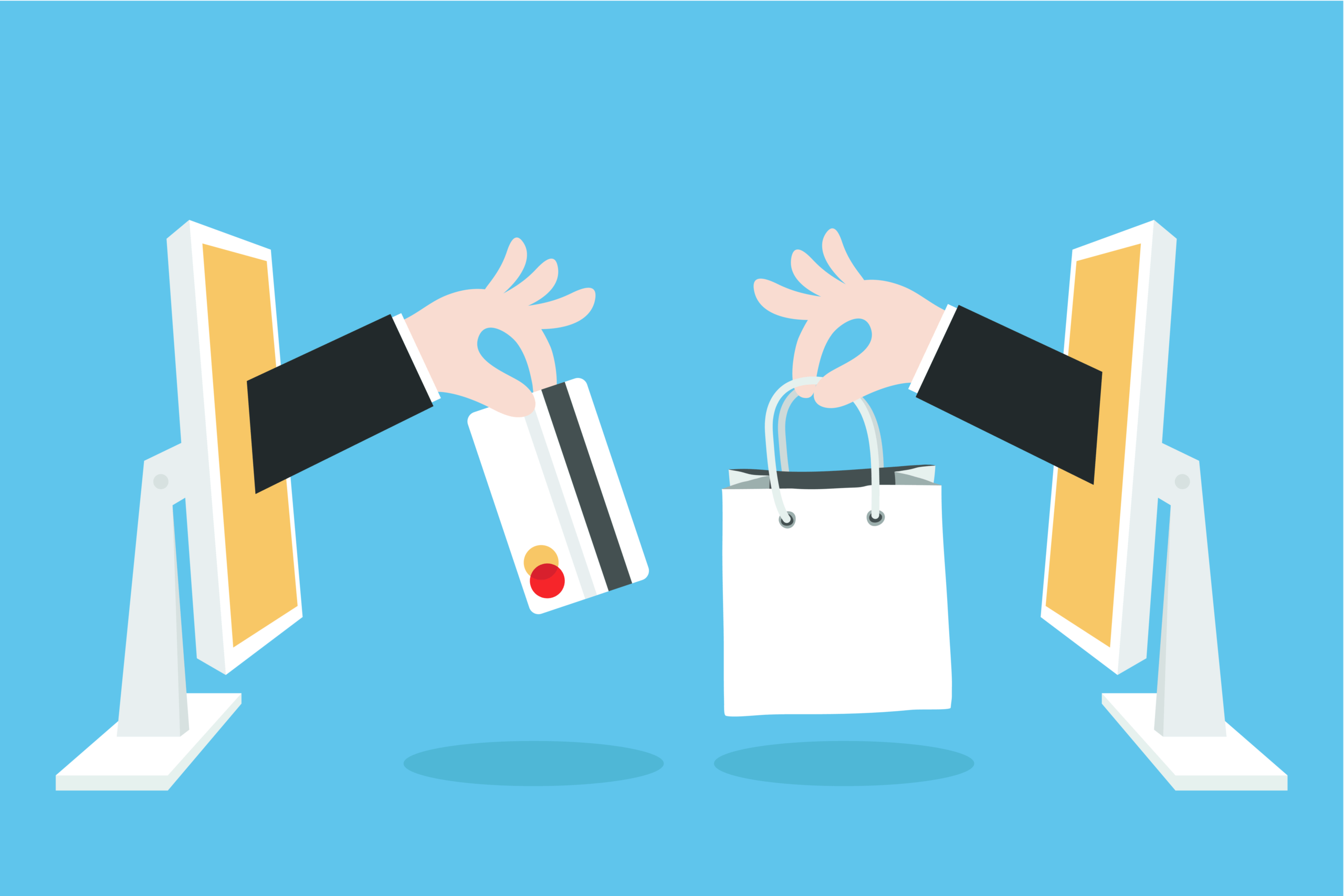Chronicle of a Death Foretold
Drizly is to be eliminated 3 years after being acquired by Uber for $1.1bn. But was it really a surprise?
E-commerce alcohol sales boomed during the pandemic, and the channel’s value share of ‘total beverage alcohol’ has risen from 2.1% in 2018 to 3.7% in 2021. Drizly, North America’s leading on-demand alcohol marketplace, was one of the big winners with sales increasing threefold in 2020 alone[1].
Uber firstly announced Drizly’s purchase in early 2021. Uber’s ridesharing revenue had been dramatically impacted by restrictions imposed by the pandemic, and the company paid $1.1 billion to fully acquire the successful drinks platform…
…only to announce that it will eliminate Drizly in March 2024.
Why?
Was the issue…
1. The diminishing appeal of alcohol e-commerce?
2. The poor strategic fit between Drizly and Uber?
3. The evolving strategy of Uber Eats?
All (or none) of the above?
And, very importantly, what is the impact of this move on alcohol brands?
"According to recent research, over 50% of online alcohol buyers expect delivery to happen within the next two hours of ordering, maximum on the same day”
- 1. WAS THE ISSUE… THE DIMINISHING APPEAL OF ALCOHOL E-COMMERCE?
From a global perspective, the alcohol e-commerce channel is likely to continue growing – albeit at lower rates – and is expected to stabilise at around 4% to 4.5% value of total beverage alcohol by 2027, equivalent to a massive US$40 billion in sales[2].
China and the US will drive much of the channel’s growth, in both cases powered by the Spirits category. In South America, investments in ‘on-demand’ (quick delivery) infrastructure – in many markets promoted by breweries such as AB Inbev – are increasing the Beer category share out of total sales. Brazil is expected to overtake Japan to become the fourth-largest e-commerce value market[3].
Therefore, e-commerce remains a key channel, and ‘on-demand’ seems to have an increasingly important role to play. According to recent research, over 50% of online alcohol buyers expect delivery to happen within the next two hours of ordering, maximum on the same day[4].
In brief, alcohol e-commerce remains appealing and is evolving. However, competitive pressure is growing and therefore establishing strong ‘top-of-mind platforms’ becomes crucial. Focus is more valuable than distraction.

- 2. WAS THE ISSUE… THE POOR STRATEGIC FIT BETWEEN DRIZLY AND UBER?
Drizly was founded in 2012 to become North America’s leading on-demand alcohol marketplace. Some of the key reasons behind its success were an infrastructure that seamlessly addressed age verification, and a system designed to effectively deal with the highly complex US three-tier regulation[5].
When Drizly was acquired in 2021, Uber claimed it would “expand its geographic presence into Uber’s global footprint in the years ahead”. However, this did not happen: Drizly remained North America focused. From a consumer interface perspective, Drizly continued operating as a standalone platform, and in parallel it was also featured within the Uber Eats app.
Meanwhile, post-acquisition, the team from Drizly had a challenging time. It had to deal with security breaches which compromised the data of 2.5 million consumers, and struggled to keep post-pandemic growth momentum, having to rely on heavy promotions and discounts to get people back into the app. Over time, many Drizly executives were transferred to the larger Uber teams and over 100 employees were made redundant last year.
Perhaps the real intent of Uber was revealed in an early statement, where it was claimed that Drizly “will be eventually integrated”. Has Drizly’s disappearance always been on the cards?
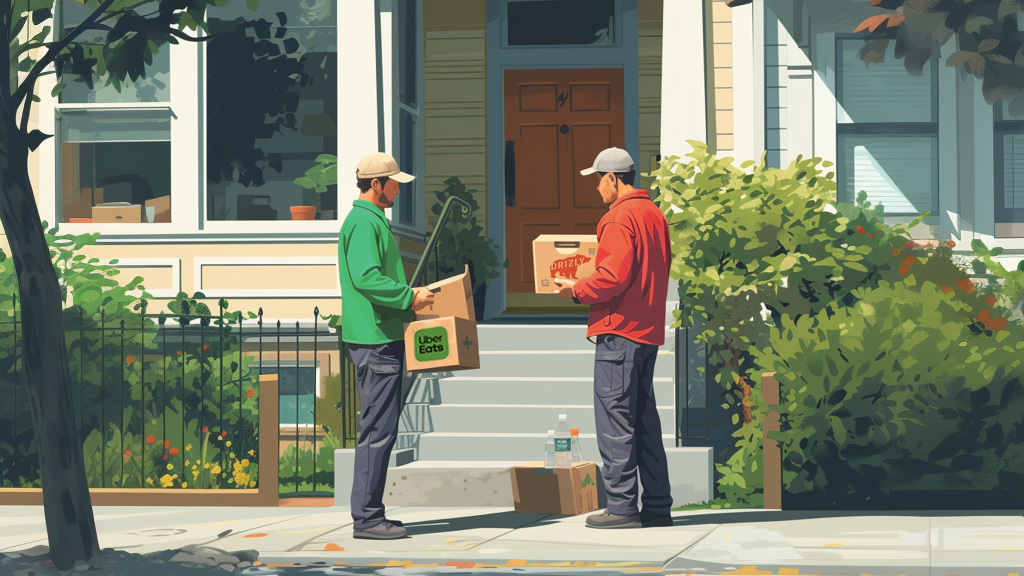
- 3. WAS THE ISSUE… THE EVOLVING UBER EATS STRATEGY?
Uber Eats has gone from restaurant food delivery to much more. Its ambition is to become the one-stop-shop, the one single app for ‘almost anything’: food, groceries, prescriptions, alcohol, and so on.
Rather than keeping multiple businesses, Uber’s approach is to purchase, incorporate and finally ‘annihilate’ them. This was the case with other platforms acquired by Uber such as Cornershop (Latin American delivery start-up) and Postmates (US independent food delivery service).
Alcohol is an important part of their strategy. Whereas perishable food is renowned for tight margins and requires immediate delivery, alcohol allows for boosting basket size as well as grouping larger orders for drop off over a few hours. DoorDash, one of Uber Eats key competitors in the US, estimated that “adding alcohol may increase restaurant and grocers’ average customer order values by up to 30% and convenience stores by over 50%”[6]. Recent partnerships with specialists such as Majestic in the UK evidences Uber Eats interest in the delivery of alcohol beverages, and the company reports alcohol sales on Uber Eats more than doubled in the last year[7].
Uber believes it can more quickly grow the basket size of Uber Eats by offering alcohol in just one place, rather than through both Uber Eats and Drizly apps. Moreover, Uber Eats has a much larger number of users than Drizly (most of whom have accounts on both platforms), and consumer migration towards Uber Eats is expected to be done pretty much automatically.
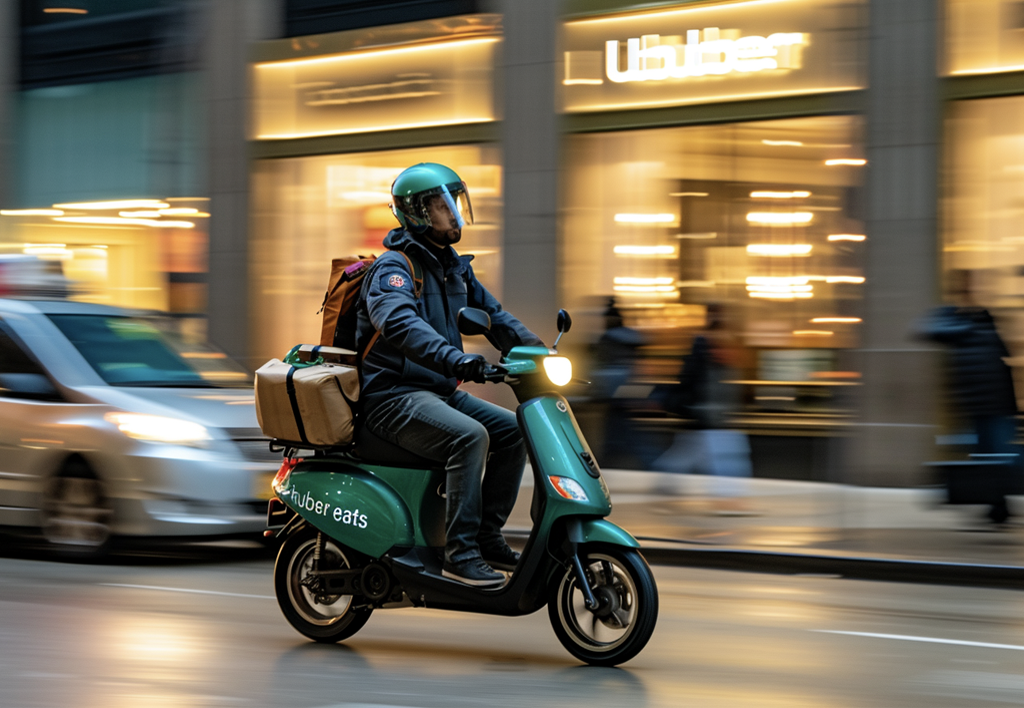
In Summary
The disappearance of Drizly doesn’t come as a surprise. It reflects a combination of environment changes and increased competitive pressure, difficulties encountered by Drizly, and the ‘centralising’ strategy pursued by Uber Eats.
Although Drizly was likely at its peak valuation when it was acquired, it fulfilled its mission to grant Uber Eats access to its US retail network access, capabilities and critical mass in alcohol beverages e-commerce – important for the improvement of basket size and profitability. Investors may also appreciate Uber’s focus behind a single brand.
WHAT ARE THE CONSIDERATIONS AND OPPORTUNITIES FOR DRINKS BUSINESSES?
- Will consumers smoothly transfer from Drizly to Uber Eats? Or will they prefer more lifestyle led, gifting, specialised drinks platforms (such as ReserveBar, Minibar or Whisky Exchange), which may have attracted them to Drizly in the first place? What can brands do to support, thrive and stand out in those specialised online retailers?
- Does the disappearance of Drizly enhance the appeal of DTC for premium alcohol brands?
- As Uber Eats becomes ‘for almost anything’, how do we expect retailers such as Amazon to react?
- Under the Uber Eats’ strategy, will the combined sales of Food with Alcoholic Drinks become even more relevant? Does that offer more opportunities for alcohol drinks to partner with restaurant chains and/or food brands? Does that bring new opportunities for partnerships with Uber Eats?
- Will consolidation under less platforms reduce the power of merchants – and brands? How can they prepare, or potentially capitalise on the changes?
Sylvia Lago, Head of Strategy at Drink Works.
Please get in touch to discuss further: sylvia@drinkworks.co.uk
[1] IWSR Drinks Analysis, December 2023; www.forbes.com, January 2024
[2] IWSR Drinks Analysis, December 2023
[3] IWSR Drinks Analysis, December 2023
[4] Uber Direct Report: The New Brand Builder, July 2023
[5] www.forbes.com, February 2021
[6] about.doordash.com, March 2022
[7] www.thespiritsbusiness.com, January 2024
Back to the future? How brands can capitalise on the returnable glass bottle opportunity
Returnable Glass Bottles (RGBs) were once the norm. However, from the second half of the 20th century, single-use plastic bottles and aluminium cans were considered to be more lightweight, resistant to breakage and therefore superior.
Triggered by sustainability concerns, returnable formats are having a resurgence.
In the UK, the ‘milkman model’ gained traction during the pandemic and is gradually expanding into other categories. TerraCycle’s Loop platform – currently available in the United States, United Kingdom, Japan and France – is working alongside major brands and retailers to enable a convenient, scalable and accessible reuse solution for consumer products. In France, the idea of a ‘consigne’ system (which allowed consumers to return empty bottles to retailers and was common in France until the 1970’s) has been recently reactivated by a group of ten French organisations, involving 700 producers and reusing 1.4 million bottles last year.
Major Drinks companies are committed to returnable packaging. Coca-Cola announced that by 2030 they would attempt to sell 25% of their beverages in returnable and refillable bottles, both of glass and PET. Coca-Cola pilot programmes are in place in countries such as France (where a new ‘universal’ 250ml returnable glass bottle was introduced in 2022 in restaurants, bars or cafes), USA and Sri Lanka.
Over a third of AB Inbev’s volume is already sold in returnable packaging and the company aims to identify further initiatives to “promote the recovery and reuse of packaging in its original form”. Projects such as Green Mining in Brazil or Nomo Waste in Colombia, create infrastructure and incentives for glass bottle collection, and to secure further income to waste collectors.
“According to French environmental agency Ademe, reusing glass bottles can reduce water use by 51%, energy use by 79% and the impact on global warming by 77%. ”
Why returnable and refillable bottles?
Circularity:
The appeal of the returnable model is undoubtedly the fact that it is truly circular and conserves limited resources. According to French environmental agency Ademe, reusing glass bottles can reduce water use by 51%, energy use by 79% and the impact on global warming by 77%. Some factors can enhance the environmental benefits of returnable and reusable packaging: using recycled content during bottle production; having as many reusability cycles as possible; recycling at the product end-stage; reducing impact from transportation (through lighter weight, logistics and type of transportation); and enabling increasing returnability through Deposit Return Schemes.
Consumer interest:
Consumers are gradually embracing circularity and reusability. According to a 2022 UK Deloitte/YouGov survey, 53% of survey respondents repaired or fixed an item instead of replacing with a brand-new equivalent, and 40% have bought second-hand or refurbished goods. A report recently released to mark World Refill Day, shows 53% of survey respondents said they were more likely to buy from a brand that offered products in prefilled returnable packaging, rising to 84% among those that had previously bought products in returnable packaging.
Compliance:
Countries will implement more stringent sustainability regulation, and packaging reusability is expected to become more prevalent. For example, France will see the implementation of a wider glass bottle return scheme by 2025, aiming at ensure a minimum reuse rate of 10% for glass packaging by 2027.
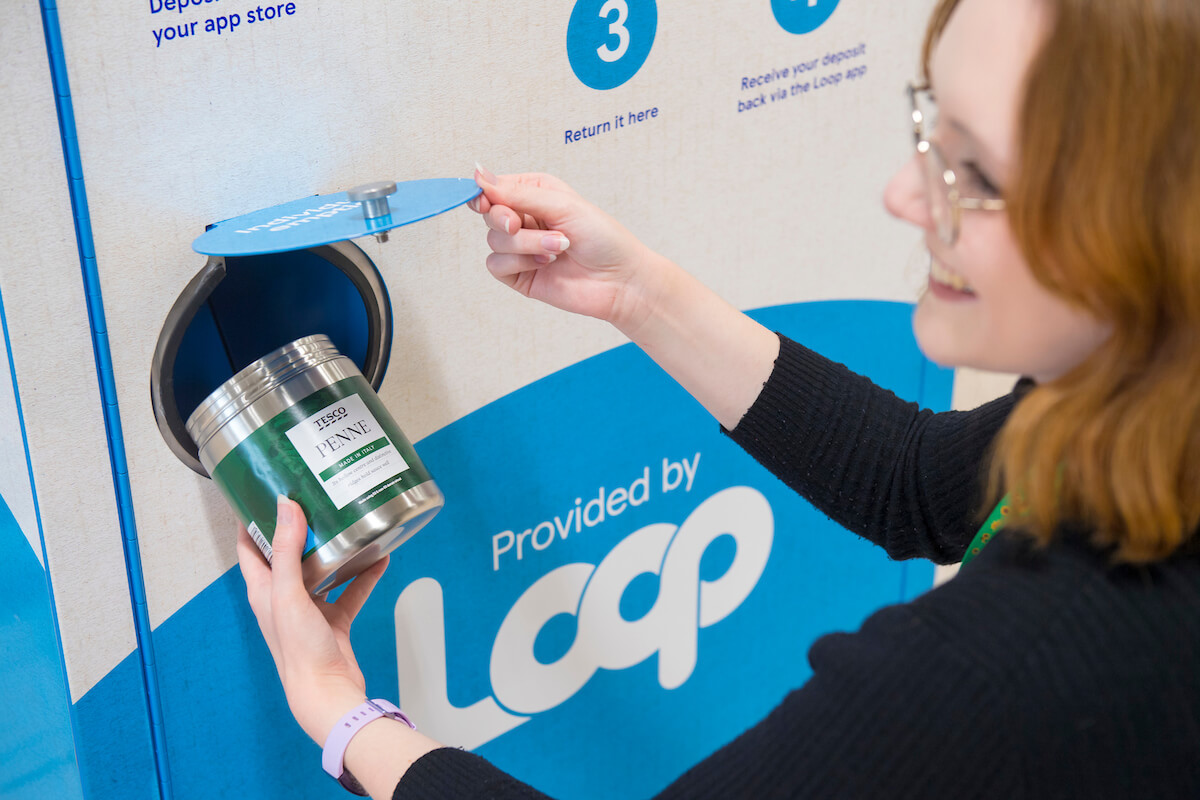
What are some of the challenges?
Infrastructure:
Setting up glass bottle collection schemes require strong commitment from governments, manufacturers, retailers and individuals. For manufacturers, ‘once-off’ CAPEX to set up and equip an RGB operation needs to address multiple steps such as receiving bottles, sorting, cleaning, filling and labelling. Building new reuse models initially adds cost into the supply chain (i.e. the investment in setting up new systems). But in the long term, reuse can prove more economically viable at scale, which will continue to improve as it becomes more mainstream.
Inconvenience:
Returning containers brings additional inconvenient steps to the consumer journey – in particular in traditional models where packaging is manually returned to retail recycling points or through reverse vending machines. The introduction of Deposit Return Schemes in markets such as the UK will help train individuals to keep and return containers. Digital collection schemes allow consumers for quicker returns through more flexibility, and by transferring the deposit to digital wallets. Furthermore, making returnable bottles less expensive than single-use can make the effort more appealing and less onerous to consumers. According to a recent survey, 50% of respondents said a discount would encourage them to make an initial purchase and to return packaging after use.
Damage Prevention:
In theory, each bottle can be used by anything from 20 to 50 times, until it reaches the point of breaking. The extension of the ‘bottle fleet’ involves damage prevention, in particular during transportation and cleaning, so that the bottles can remain in circulation for longer.
Packaging Design:
Reusable Glass Bottles weight cannot be too light (which impacts durability) nor too heavy (which impacts costs). Different bottle colours and shapes – which may be dictated by brands but also by regional appellations in the case of wines – can make supply management particularly challenging. ‘Universal bottles’ deployed across the portfolio (such as the PET bottles adopted by Coca-Cola in Latin America) allow for flexibility and more effective sorting. Labels fixed with a strong adhesive may be difficult to remove and remain on the glass throughout the cleaning and sorting – as a consequence, packaging can be misidentified, rejected and not be recycled.
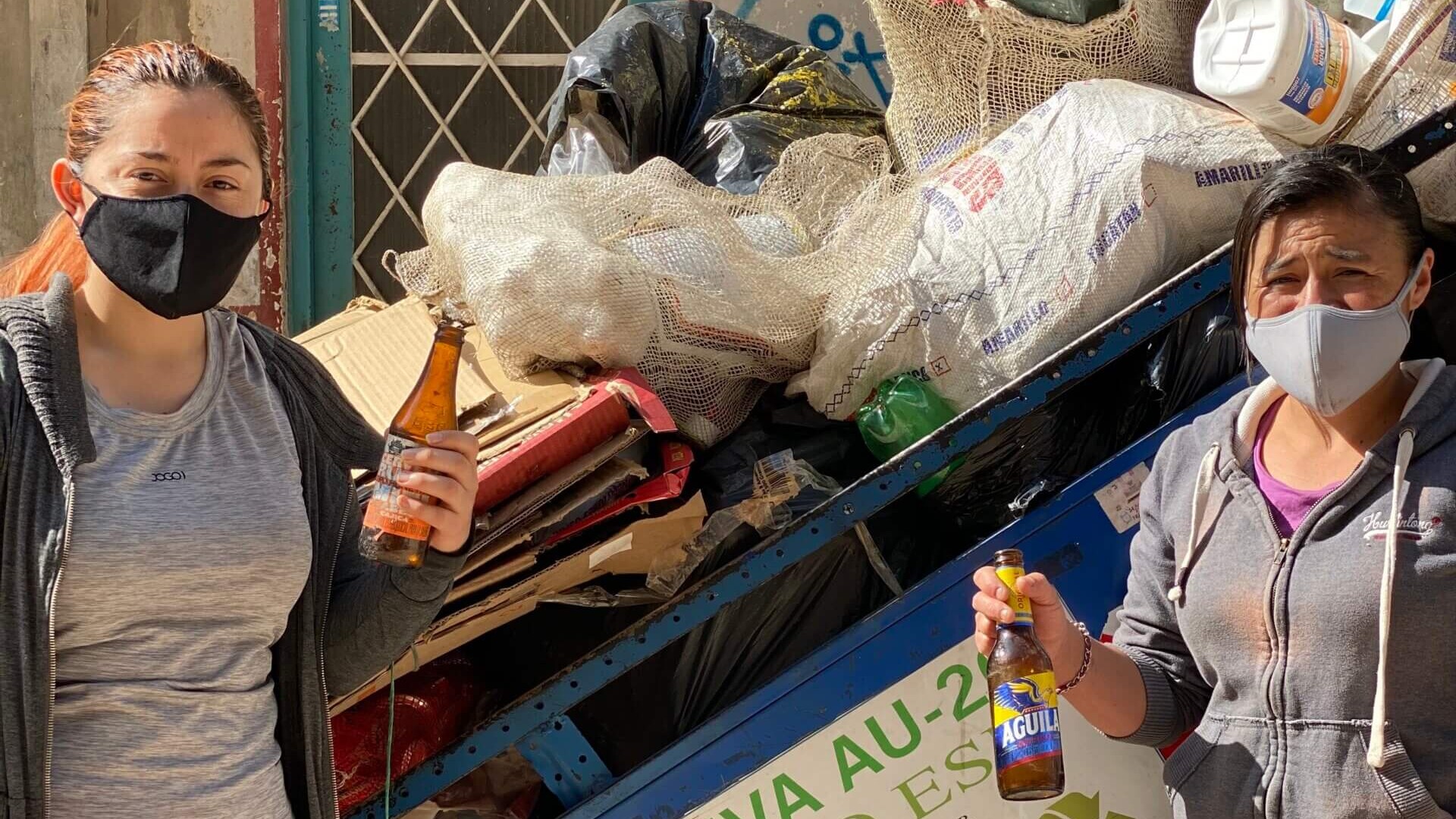
What are the opportunities for the brands?
Fit the sustainability story into the brand narrative. In the US, AB Inbev’s Michelob Ultra Pure Gold partnered with Conscious Container to incentivise bottle returnability. A QR code and app provided consumers with insight into how much packaging they were preventing from entering landfill and oceans through their choices.
Make returnable packaging more practical and exciting. Drink Works and the Corona team in Europe developed beautiful and ergonomic crates using maritime plastic waste, making returnability more attractive, reinforcing sustainability credentials and capitalising on the brand story.
Create awareness and educate consumers. Embrace the fact that the ‘scuff’ is the evidence of returnability and circularity. Ultimately, the more scuff the better.
Offer incentives through engagement and gamification. Use ‘fun’ tools such as Hellmann’s partnership with Nintendo’s Animal Crossing, which informed and inspired people to make the most of leftover food at Christmas and give back to those in need. Consider how consumers can better understand what returnable packaging entails, engaging and incentivising them to return bottles.
Promote the reduction of packaging complexity. When developing new packaging, consider the impact on reusability and a possible fit across different SKUs. Ensure bottle finishes and adhesive strength do not hinder their reuse.
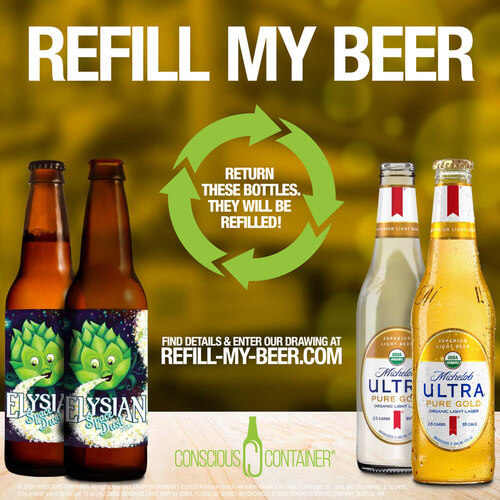
In Summary
It’s just a matter of time. Returnable/refillable bottle formats are circular, carbon efficient solutions, and are expected to become more prevalent over the next decade. Adopting such models are critical to move from being a ‘throwaway culture’ and kickstart a true circular economy.
Major efforts will be required from all stakeholders involved. Overtime, regulatory measures will be put in place and companies and consumers will need to comply.
Businesses who support, advocate and embrace it earlier on can be more closely associated with the model, capitalise on it and add true sustainability values to their brands.
https://www.coca-colacompany.com/reports/business-and-sustainability-report
https://www.ab-inbev.com/sustainability/circular-packaging/
https://www.foodpackagingforum.org/news/zwe-report-identifies-climate-benefits-of-reusable-packaging
https://www2.deloitte.com/uk/en/pages/consumer-business/articles/sustainable-consumer.html
https://www.foodpackagingforum.org/news/france-to-launch-glass-deposit-system
High Spirits: What can Wine learn from Whisky, Gin, Tequila and Aperitifs?
Wine has displayed undoubtful dynamism over the last few years. The growth of alternative formats such as bag-in-box and cans is an evidence of that. In Rosé, Whispering Angel and Miraval have become contemporary lifestyle brands and LVMH’s Château Galoupet has broken old paradigms, selling premium rosé wine in plastic packaging and brown recycled glass bottles.
However, the relationship between wine and Millennials / Gen Z has been a challenge for many years. The profile of wine drinkers has been ageing and, over the last decade, wine has lost market share to craft beers, hard seltzer and spirits.
Why? Well, younger LDA (Legal Drinking Age) consumers are more health-conscious and likely to choose lower ABV drinks, abstain from alcohol entirely, or drink across a wider range of categories than their parents. The perceived ‘non-diverse’ image of the wine industry also affected its appeal. Moreover, competition from cocktails on on-trade wine lists has intensified, reflecting new post-pandemic consumer interests. This is true across a number of markets in North America, Europe and Asia.
One of the advantages of our specialism here at Drink Works is the opportunity to look at different drinks categories, and understand what learnings are transferrable across them.
And one thing is unquestionable: the spirits industry has been extremely dynamic and offers plenty of valuable insights. Some of the innovations in Whisky or the recently transformed perception of Tequila would be inconceivable a decade ago.
What can wine borrow from spirits to enhance its appeal to adults under-40 (without alienating older drinkers)? Based on consumer insights and knowledge of both wine and spirits categories, we have put together some thought-starters for wine brands to consider:
Treat sustainability as a top priority, looking beyond the vineyard ecosystem. Expand the environmental benefits into the wider world: in spirits, Salcombe Gin is supporting meaningful initiatives that rewild the oceans and sequester carbon. Partner with alternative closed loop systems and embrace transparency and traceability. Consider solutions that reduce the environmental impact of transportation, exploring innovative product formulations such as concentrates. Make the act of refilling ritualistic and desirable. And once again, and very important: communicate what you are doing and why you are doing it!
Explore functionality. Wine (red in particular) has a ‘halo effect’ and has been traditionally praised for its antioxidant properties. The wine industry has been actively ‘taking away the negatives’: sulphites, alcohol, calories… How about exploring the addition of aromatic extracts with positive associations and/or functional properties instead? (Duly taking into account the regulatory constraints, of course). Look at the spirits business for inspiration and consider Botanicals or other ‘good food – good mood’ ingredients.
Define new ‘visual’ consumption rituals. Aperol’s distinctive bright orange ‘summer in the glass’ is one of the main reasons for its global success. Rosé has also benefitted from its photogenic appeal. Consider the power of Instagram and social media. Value the colour of your wine, consider specific glassware and develop new serving rituals. Could the addition of frozen grapes create a unique presentation for rosé or white wines, whilst chilling (and not diluting!) the drink?
Celebrate provenance. Remind consumers of where your brand comes from and transport them there, across multiple touchpoints. As Malfy Gin has taken ownership of the Amalfi coast, develop an identity, a colour, a ‘feeling’ to your wine brand that is ownable and all yours.
Or challenge provenance. Consumers are embracing new exotic origins, and whiskies now come from locations such as China or Mexico. New unexpected wine regions can bring unique product attributes that consumers will learn to love.
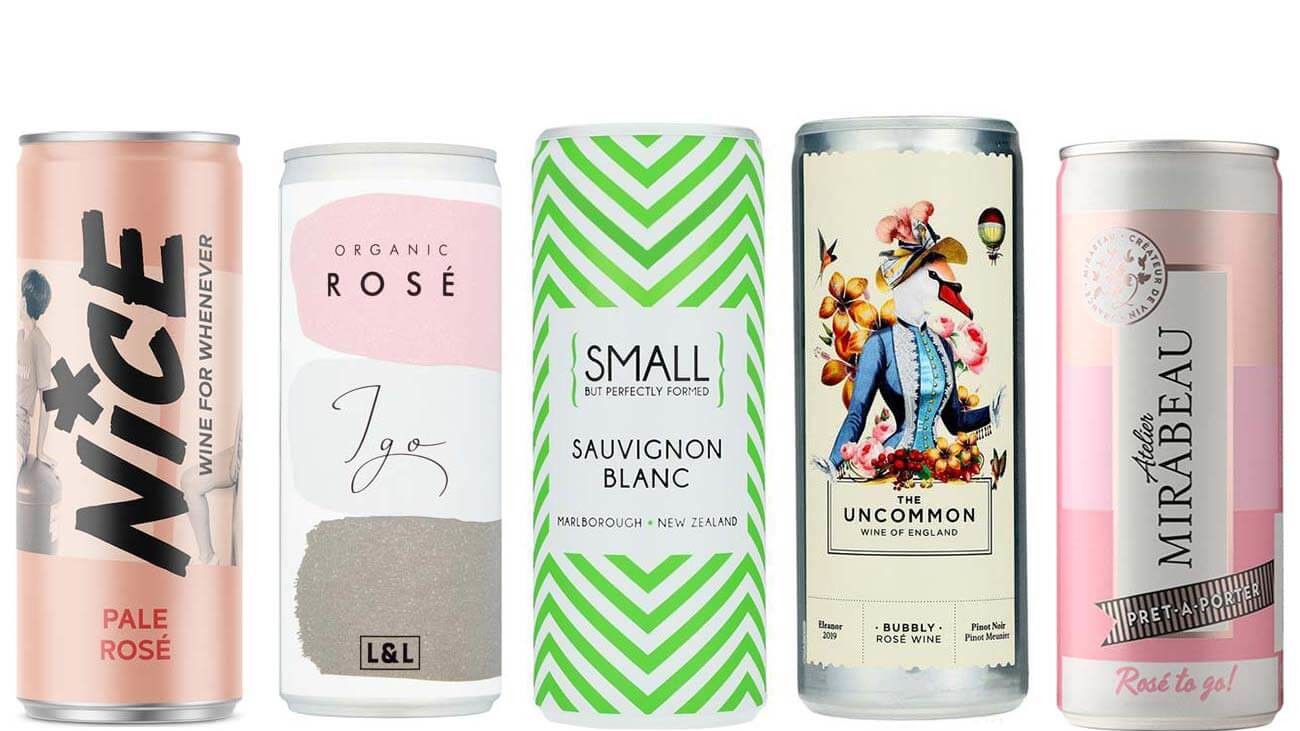
Add convenience to social occasions. The success of RTDs and wine in cans evidence the consumer interest in the convenience of single serves and ‘on-the-go’ drinks. Take convenience to the next level, into the social environment. Introduce mixed party packs for higher-margin brands, creating packaging that makes it easier to chill and serve wine. Collaborate with premium snacks to reinforce innovation and convenience, taking over consumption moments traditionally dominated by spirits.
Embrace lifestyle and culture. Spirits brands are renowned for their deep pockets, and therefore the ability to fund high-profile sponsorships, events and cultural activities. Wine brands can work with tighter budgets by ‘splitting the bill’ and partnering with relevant brands outside of the category, to bring exciting collaborations or develop interesting serving accessories.
If you can’t beat them… Consider extending into adjacent spirits categories that maximise your brand potential and cater to the palate of your consumer base. Gin has been the default extension for rosé wine, hard seltzer has been targeted by lower-priced wine brands… Explore opportunities to use winemaking leftovers to produce gin, grappa, aguardiente: besides adding novelty, this will reinforce your sustainability credentials.
“The profile of wine drinkers has been ageing and, over the last decade, wine has lost market share to craft beers, hard seltzer and spirits”
Tighter margins should not prevent wine brands from learning from spirits and innovating. Well, thought-through strategy and effective execution can help overcome budget constraints (and potential internal resistance in more traditional organisations), and lead to successful commercial results.
All of that said, a small percentage of wine brands should remain ‘precious’ about their brand, and be cautious about more radical moves. But the vast majority can (and should!) innovate – and look for cost-effective strategies that will increase their appeal towards younger LDA consumer groups, paving the way for further long-term growth.
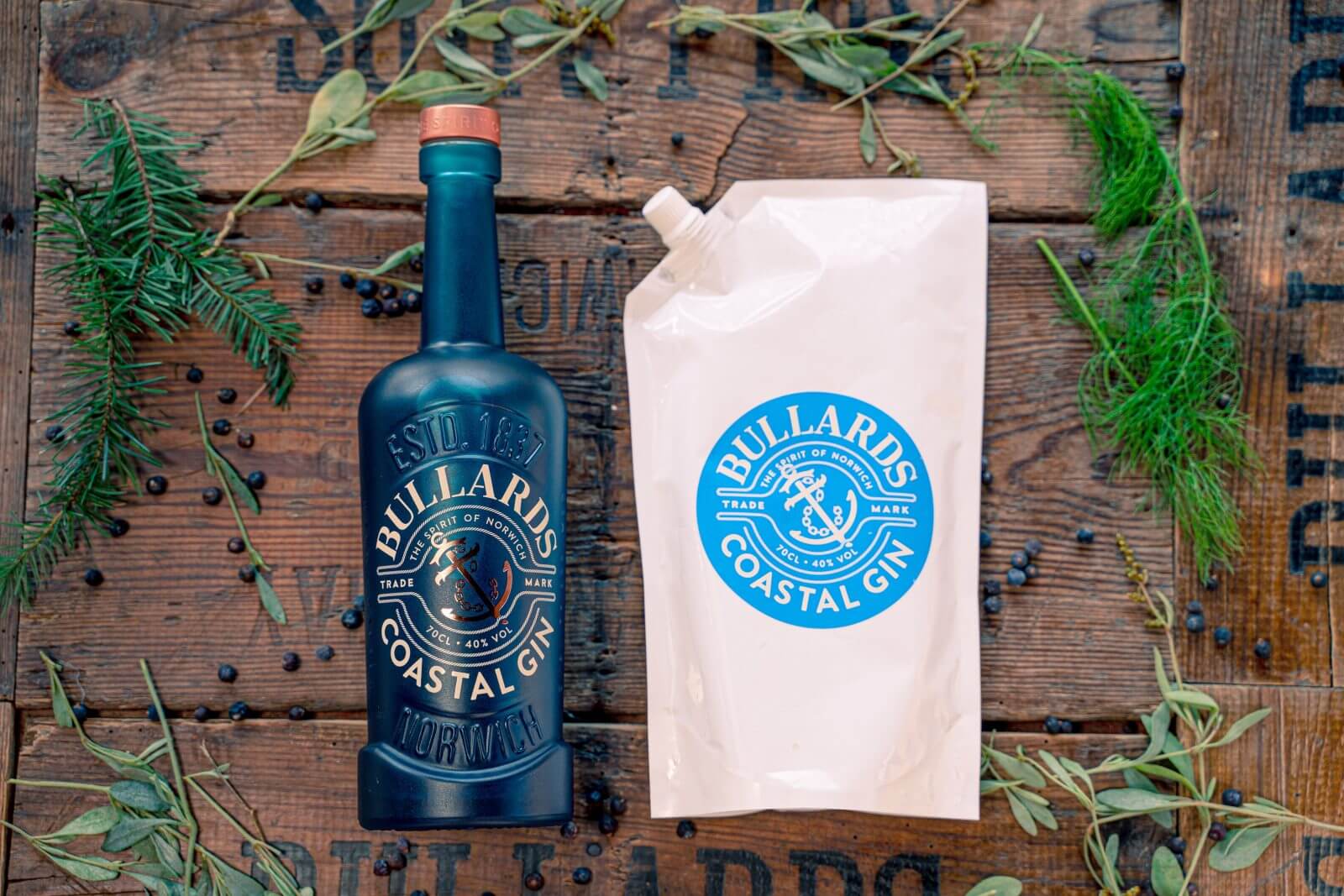
https://www.nytimes.com/2022/02/07/dining/drinks/wine-millennials.html
https://www.theiwsr.com/fewer-new-wine-drinkers-enter-the-wine-market-in-the-us-and-china/
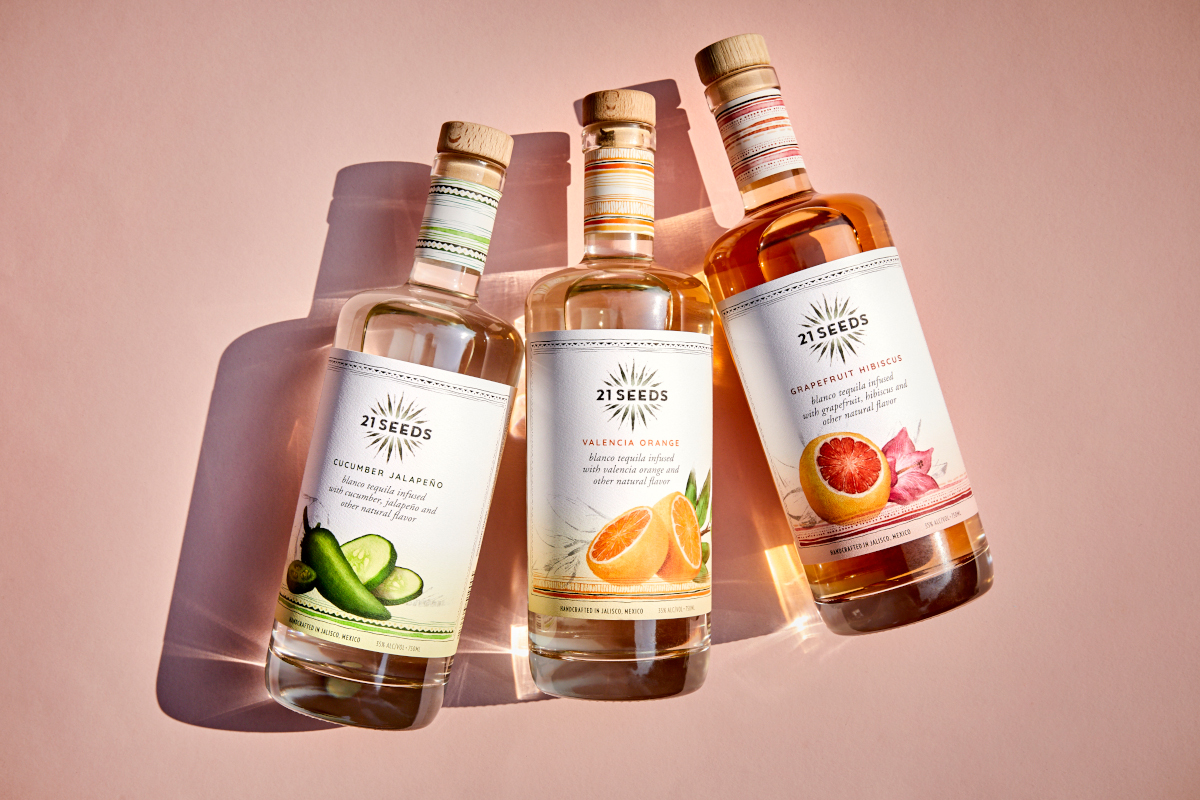
Wine And The Road Towards Sustainability
The last few years have seen a significant change in consumer attitude towards sustainability, further intensified through the pandemic. This change in mindset applies to most categories – therefore, not surprisingly, also to wines. According to a recent US survey, 90% of consumers would be willing to pay more for sustainably produced wine [1]. However, despite their willingness, most wine drinkers are actually quite confused.
As a matter of fact, the environmental impact of producing wine is larger than most consumers expect. Vineyards damage ecosystems, carbon footprint of global winemaking is excessive, and over six gallons of water are required to produce a single gallon of wine [2].
But sadly (and ironically) wine is also severely impacted by climate change. Growers in northern Italy have seen sunburnt crops with increasing frequency, whilst devastating spring frosts affected up to 80% of French vineyards earlier this year.
Nevertheless, as other industries are making headway toward sustainability, so can wine.
What are the hurdles towards the delivery of sustainability in wine – and what can be done to offer consumers a more sustainable proposition?
Starting with some of the challenges:
There’s no common definition of sustainability within the industry
Wines can be organic, biodynamic, fairtrade, natural…. Regulations and certification schemes abound, both at regional and national levels. But most claims focus on the production process, whereas sustainability should be manifested in every step of the winemaking process – from water and energy conservation to reduction in carbon emissions, sustainable packaging and social responsibility around communities. Many wineries are looking into becoming ‘Certified B Corp’, which is encouraging as it addresses the social and environmental impact into every aspect of the business.
The ‘Appellation’ systems add rigidity
Albeit conducive to higher consistency and quality standards, the constraints imposed by the different ‘appellations’ prevent wine makers from establishing more sustainable practices such as bulk transportation or growing grape varieties that may be better adapted to climate change.
Glass bottles are the elephant in the room
The glass bottle alone makes up half of the wine’s overall carbon footprint. The amount of energy needed for the production of a virgin glass bottle is extremely high, representing over half a kilo of carbon emissions per bottle [3]. Although glass can be infinitely recycled, the process also requires high energy levels. Moreover, in markets such as the US only a third of waste glass gets recycled [4].
Transportation is a challenge and further contributes to carbon footprint
Provenance is critical and as a consequence wine moves around the globe. Wine transported in bulk (and bottled closer to destination) takes one third of the space occupied by the same bottled volume. Although the amount of bulk wine carried has more than doubled over the last 10 years, with 45% of all still wine imported by the UK arriving in bulk [5], this practice is not yet fully normalised across the world.
Return schemes require significant consumer behaviour change
Bottle deposit schemes are increasingly popular in other drink categories such as soft drinks and beer. In wine, returnable glass bottle schemes are growing but are still limited to a small number of retailers. Consumers are yet to adopt the practice, make the extra effort and get used to consuming wine within a few days only, as refilled bottled wines have a shorter shelf life.
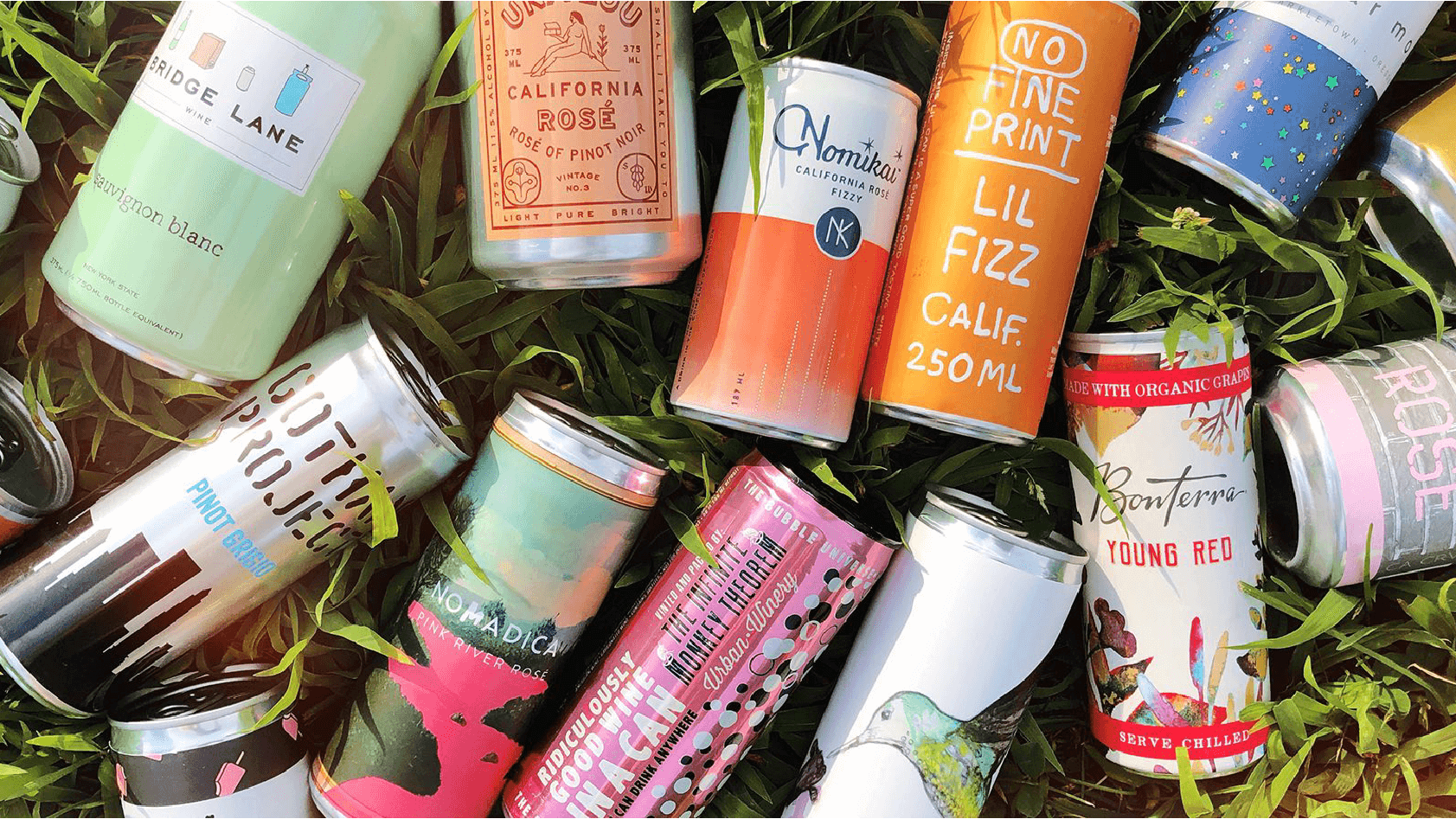
The evolving role of sustainability and the opportunities it brings
Undoubtedly, the role of sustainability has dramatically changed. Sustainability has been escalated from an opportunity to a real consumer requirement and compliance need. The UK government has committed to cut emissions by 78% by 2035, and all businesses – including vineyards, winemakers, logistics and retailer practices – will need to adopt new practices to comply. There will be very limited room for ‘greenwashing’: stakeholders will expect effective, clearer and more consistent information coming from all industry players.
“Sustainability has been escalated - from an opportunity to a real consumer requirement and compliance need”
What are some of the opportunities for wine?
PURSUE LIGHTWEIGHT GLASS – Technology is enabling the production of lightweight yet highly resistant types of glass. Because heavy bottles are generally associated with higher quality wines, communicating the benefits of lighter glass will be critical for their acceptance and adoption.
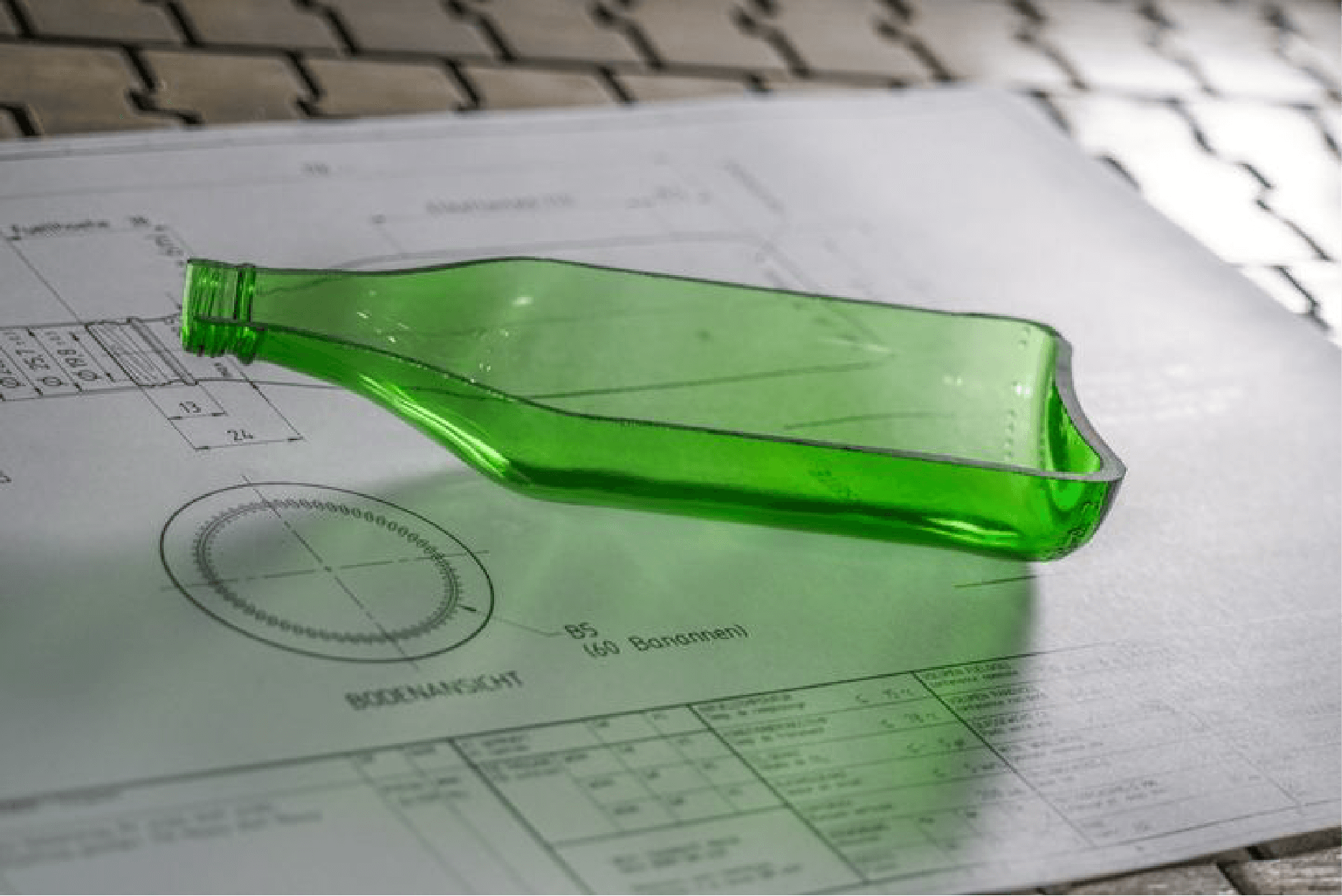
DELIVER CLARITY – Simplify the message: consumers need to be clearer about the proposition. Learn from NZSW (Sustainable Winegrowing New Zealand) one of the first sustainability programmes to be established in the international wine industry in 1995, which successfully created standards and a language consumers understand.
BENCHMARK OTHER INDUSTRIES – Understand how players such as Coca-Cola and AB Inbev have made headway in Returnable Glass Bottles, and apply the relevant learnings for wine.
EXPLORE D2C – Consider the benefits of selling directly to consumers, which has become more prevalent since the start of the pandemic (see link to DW recent article on D2C here). Despite the logistics challenges posed, D2C also constitutes an opportunity to control more steps of the process and ensure the products are reaching consumers through sustainable means.
BE FOCUSED – BUT NOT BLINKERED! – Don’t get too obsessed with one single idea. Dig deeper than initial consumer perception and explore multiple methods that can lead to improved sustainability across the supply chain. Sustainability will be an ever advancing journey, not a one stop, off the shelf solution.
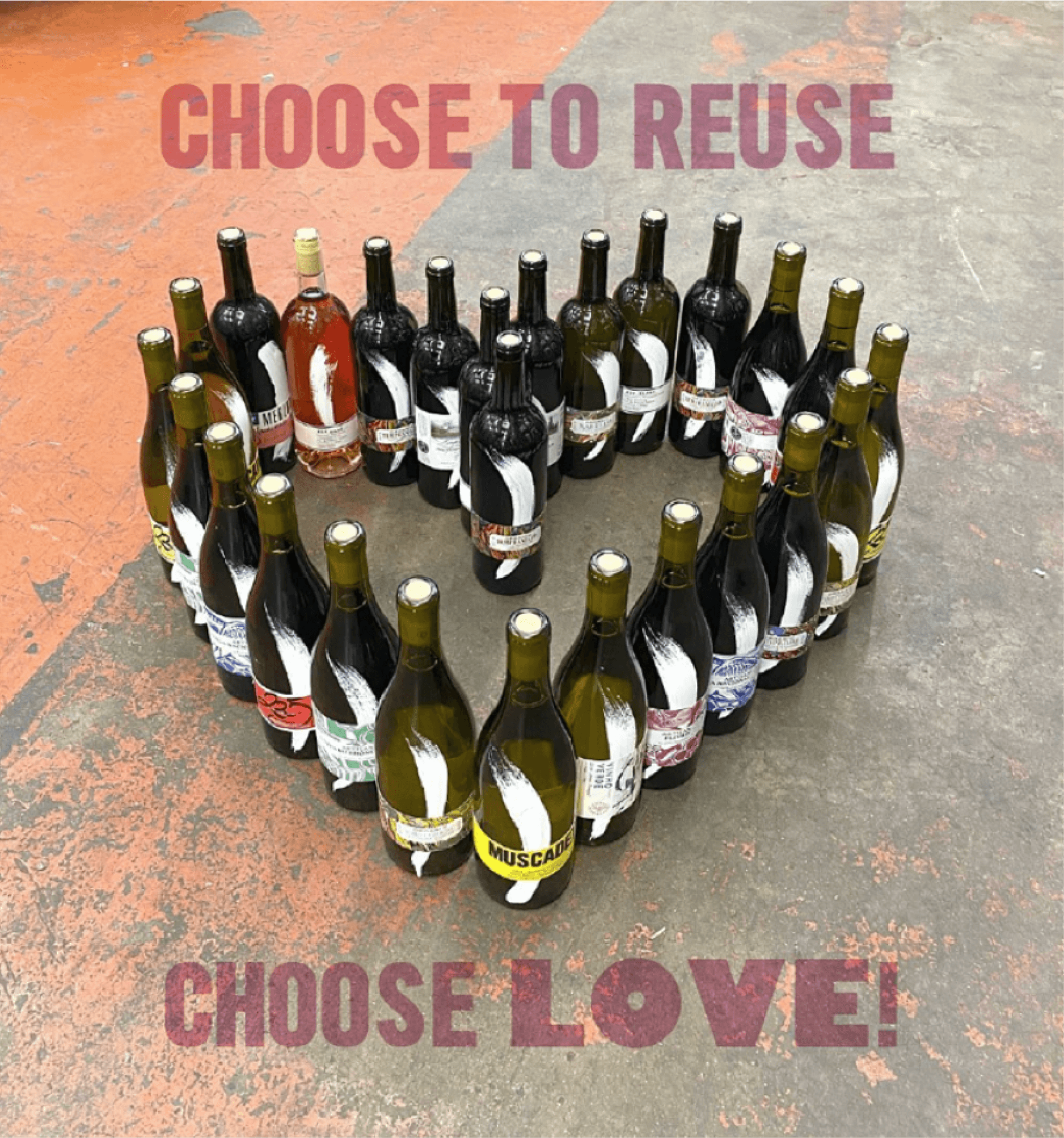
Further considerations
Wine drinking is highly ritualistic and changes will require industry intent and consumer education.
Although adoption of recent innovations, such as wine drinking in cans, demonstrates consumer flexibility, occasions must be taken into account for the success of new practices. Consumers will be more willing to make efforts and compromise on a £10 bottle of everyday quality wine (which ultimately make a significant part of the industry volumes) than on a £100 bottle of a grand cru.
For more premium ‘special occasion’ wines, sustainable innovation needs to be well inserted in craft and incorporated into the brand story. Rather than a challenge, this can be a major opportunity for traditional brands to boost their relevance with younger adult consumers.
1 Forbes, Survey Of Wine Consumers Says Sustainability Takes
Precedence Over Organic, 2019
2 Ecowatch.com, Sustainable Wine Is Less Damaging to the Environment,
But How Can You Spot It?, 2020
3 Wine and Spirit Trade Association, 2021
4 Glass Packaging Institute, 2019
5 FT, Why it’s time to cut back on glass wine bottles, 2020
Is Travel Retail ready to take-off? Opportunities for Wines and Spirits
Travel Retail reached $86bn sales in 2019, an eight-fold growth since the late 80’s. Over the last three decades, its focus has significantly changed from selling ‘cheap booze and fags’ to offering premium experiences. Airports turned themselves into sophisticated shopping malls and Seoul Incheon or Singapore Changi became state of the art examples of bricks-and-mortar retail.
However, not surprisingly, Travel Retail was one of the hardest hit sectors by the pandemic. Sales collapsed by 2/3 last year, and are not expected to reach 2019 levels before the second half of the decade.
Nevertheless, according to M1nd-set, a consultancy, there’s a latent appetite to travel and spend in Travel Retail. More than 60% of international travellers participating in a recent study said they would fly again within the first three months of travel restrictions being lifted. And 40% would visit the airport shop next time they travelled abroad.
As Travel rebounds,
so will Travel Retail.
But what will change?
First of all, some things will not really change. Asia will consolidate its dominance in the Travel Retail landscape. Tax exempt shops in downtown areas or designated zones (such as Hainan Island, south west of Hong Kong) will continue to grow – and increasingly attract the interest of European duty-free operators and global brands.
But some things are expected to change.
Online shopping has been accelerated in domestic markets. And the same consumers who now buy their groceries or clothing online will be the ones flying in a few months’ time. So how will this affect Airport or Airline Travel Retail?
Consumers will be more open to browsing before buying, clicking and collecting at arrival, or trying further solutions that will make their experience more convenient. And in order to achieve that, concerted effort and passenger data exchange between airports, airlines, operators and brands will become ever more critical.
Moreover, in such a high traffic international environment, all stakeholders must ensure the experience is safe, comfortable and reassuring. Contact points will have to be reduced, sampling will need to be reconsidered, and digital should be used more effectively to replace some of the traditional physical touchpoints.
“More than ever, and above and beyond price discounts, passengers must be given a stronger reason to shop”
Travel Retail and Drinks: Major Impact but Massive Opportunities
Wine and spirits, which accounted for approximately 17% of sales in 2019, were also severely impacted by the toll of travel restrictions.
According to Diageo, Asia and Middle East Travel Retail net sales were down by 46% during the 2020 fiscal year. Pernod Ricard claimed that Covid-19 ‘halted business’, whilst the Campari Group recorded a 68.9% net sales decline in 2020.
Although recovery is expected, as business travel becomes less prevalent in the future – and as high-frequency high net-worth individuals travel less – super premium products may be particularly impacted, and that will affect the Drinks category. More than ever, and above and beyond price discounts, passengers must be given a stronger reason to shop.
What are the innovation opportunities for Drinks companies in the changed Travel Retail environment?
• Sustainability – Many consumers are aware of the impact travel has on their own carbon footprint. Brands should not only drive sustainable packaging solutions in Travel Retail but, rather, make it their lead channel in promoting sustainability.
• Memorability – Post-pandemic travellers will be seeking for quality of experiences over quantity. Ensure the Travel Retail products reflect that. Develop products and packaging that connect to destinations and memories – and make them special and hard to forget.
• Partnerships – Partner with relevant brands – not only in Travel Retail but also in domestic markets – to bring consumers to you when they travel. Partner in activations, and also in joint product and packaging developments.
• GTR Exclusives / Gifting – These have been an important part of the Travel Retail proposition for some time. But as competition with the domestic online channel grows, it becomes crucial for Brands to offer propositions that consumers cannot get anywhere else. Use the emerging time lag between purchase and delivery to offer more crafted and personalised options.
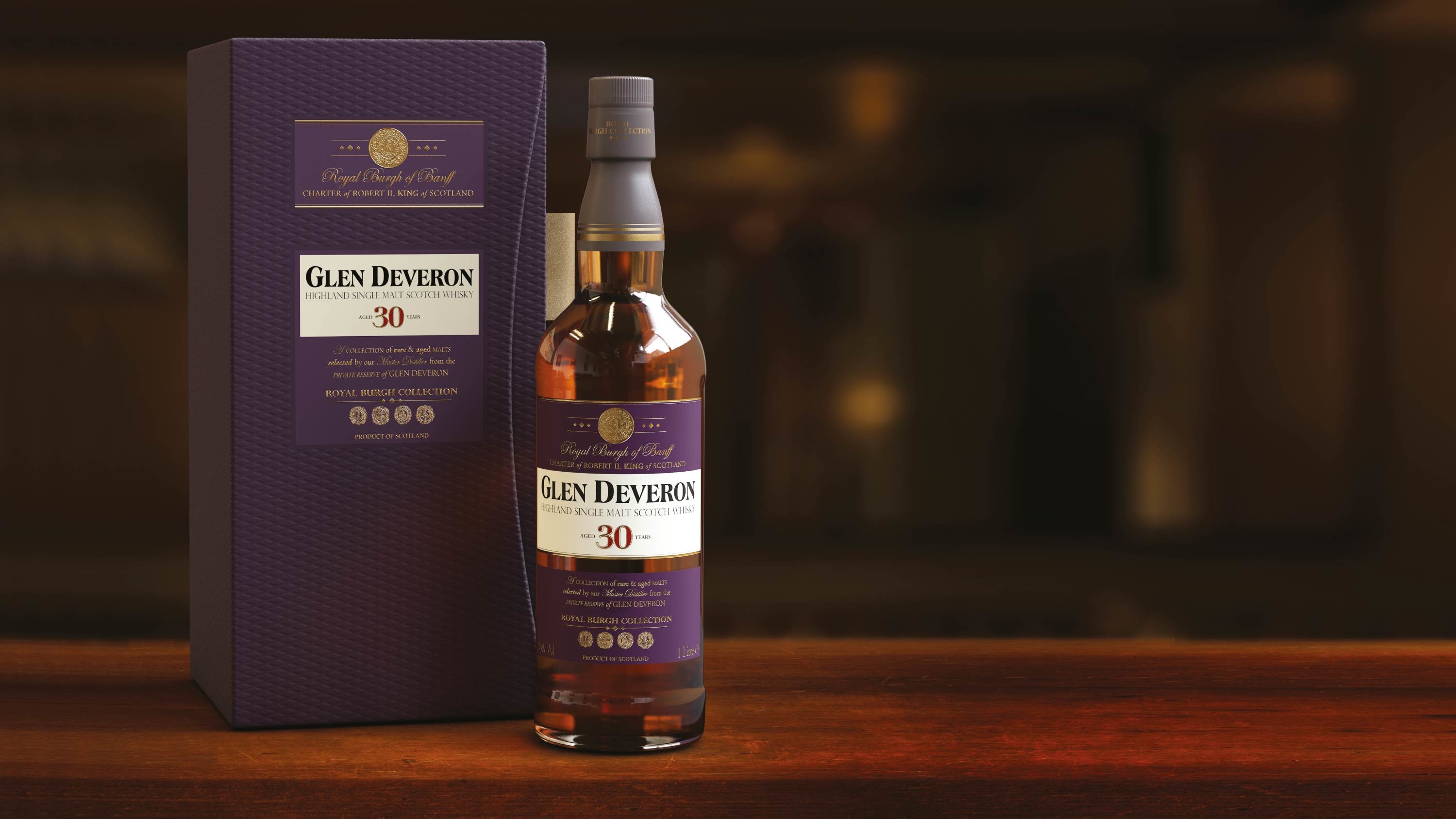
So – will Travel Retail Rebound?
In a recent article by The Economist, there is an argument for closing of the duty-free loophole as it is seen as unfair to high street retail and non-travellers… However, with or without tax incentives, airports will remain good places to shop: the environment is generally pleasant, and the passengers are ‘captive’ and with plenty of time to spend (despite the growing competition for their attention from wi-fi).
Therefore, Travel Retail remains a strategic channel to reach consumers, in particular from emerging markets, in a premium setting.
However, the pandemic has accelerated trends everywhere in the world, and that includes an increased focus on convenience. This is a unique opportunity for Travel Retail stakeholders to work together and accelerate change – and make the shopping experience much more convenient.
So Travel Retail will take-off. But, just like Travel, it should also provide consumers with propositions and experiences that they will not forget and cannot get anywhere else.
Sources: The Economist, The Drink Business, IWSR, The Spirits Business.
Header Photo by Kiwihug on Unsplash
D2C and Drinks: Now is the time
We seem to be very familiar with the first generation of Direct to Consumer (D2C) brands: according to Retail Times, 97% of UK online shoppers are aware of the leading D2C brands and 37% have already purchased from one.
Brands such as Made.com, Glossier, Graze, Dollar Shave Club or Away were introduced in the early/mid 2010’s, grew with the rise of social media (as a communication and commercial platform) and benefited from the opportunity to sell without the middlemen. They became household names, attracted investments, and in some cases were acquired by multinational groups.
However, over time the D2C space became crowded. Consumer acquisition costs have risen significantly, and the realisation that physical retail presence constituted a competitive advantage meant higher marketing budget requirements. And whilst most of these brands innovated in their branding and delivery model, many did not offer the product innovation pipeline that consumers expected.
As Neil Blumenthal, CEO of Warby Parker, noted earlier this year: “It’s never been cheaper to start a business, although I think it’s never been harder to scale a business”.
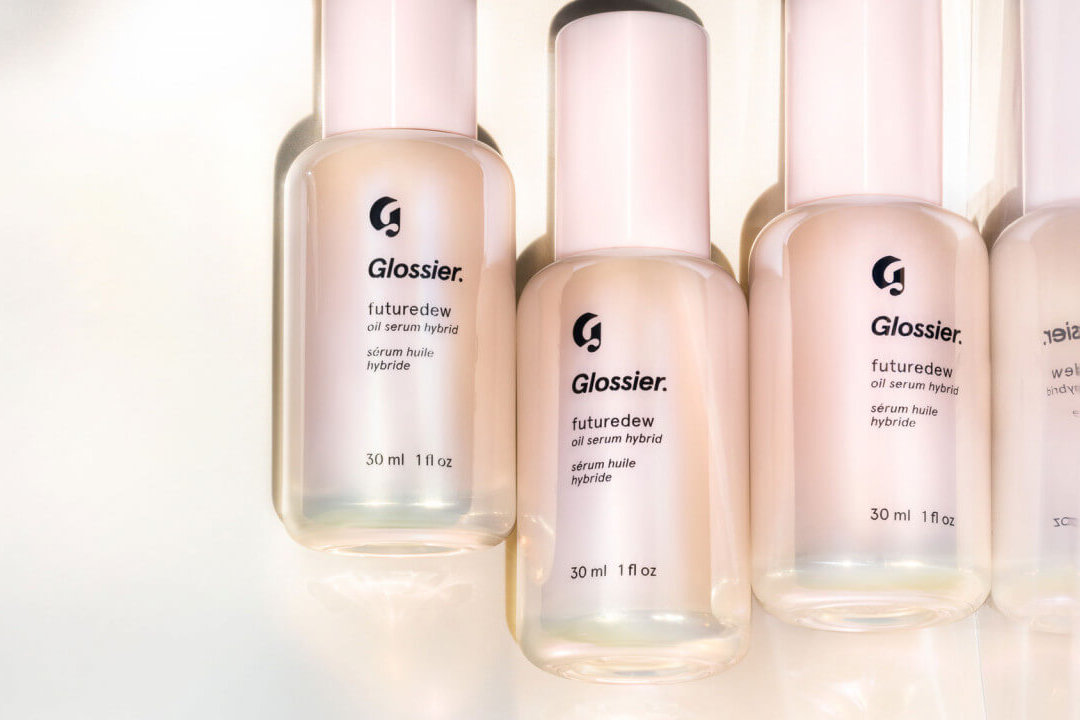
ENTER COVID 19
Covid-19 was a significant catalyst for change in D2C.
Behavioural change brought further pressure on first generation D2C brands, in particular those in categories which become less relevant as consumer frugality or time indoors increase (for example, Away travel equipment or Glossier cosmetics).
But the crisis has also proved something of a silver lining.
Online shopping became more attractive to a broader range of shoppers, a convenient (and safer) way to have access to brands – a behaviour that, for many, will be here to stay.
And as physical retailers rationalised ranges or withdrew promotions, many businesses were forced to reach out directly to consumers.
Large organisations which have for some time considered D2C were finally able to convince management and launch their platforms just a couple of months after lockdown began. Heinz (Heinztohome.co.uk) and Pepsi (snacks.com and pantryshop.com) introduced their platforms in April and May, respectively. AB Inbev has recently started testing its own direct to consumer webshop on a small scale, and Nestle opted for a lower risk / lower investment third party collaboration with Deliveroo in the UK.
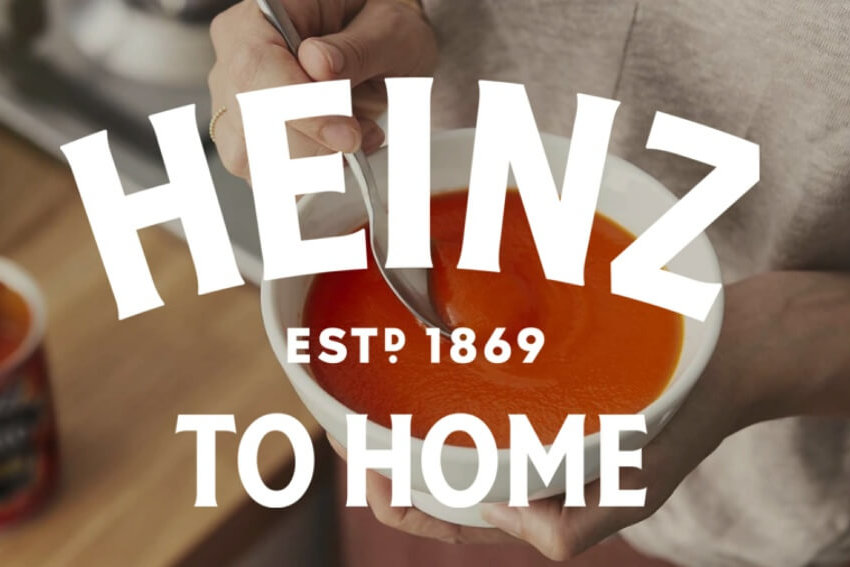
NOW IS A GOOD TIME FOR LEADING DRINK COMPANIES TO CONSIDER D2C
For a start, the crisis (and current paradigm shifts) is an opportunity to fast track changes and drive new initiatives in larger, and in some cases slower, organisations.
Very importantly, the unchanging consumer relevance of Drinks as a product, and the increased importance of at home consumption, makes this category extremely attractive in comparison with others.
Moreover, offline presence is a major competitive advantage for large Drinks brands in the new D2C world. The combined presence in major retail chains and Amazon listings provide Drinks brands with the awareness and visibility to thrive online.
And, as mentioned earlier, operating in the new D2C world means higher consumer acquisition costs and requires deep pockets – although this gradually improves as the operation scales. That puts larger Drinks businesses in a stronger position vis-a-vis SME’s and small start-ups.
It’s important to highlight, however, that moving into D2C puts pressure on Drinks brands to deliver execution excellence – being it in customer service, in offering a seamlessly navigable online interface or in creation of engaging content. Amazon have made consumers impatient and brought their expectations up.
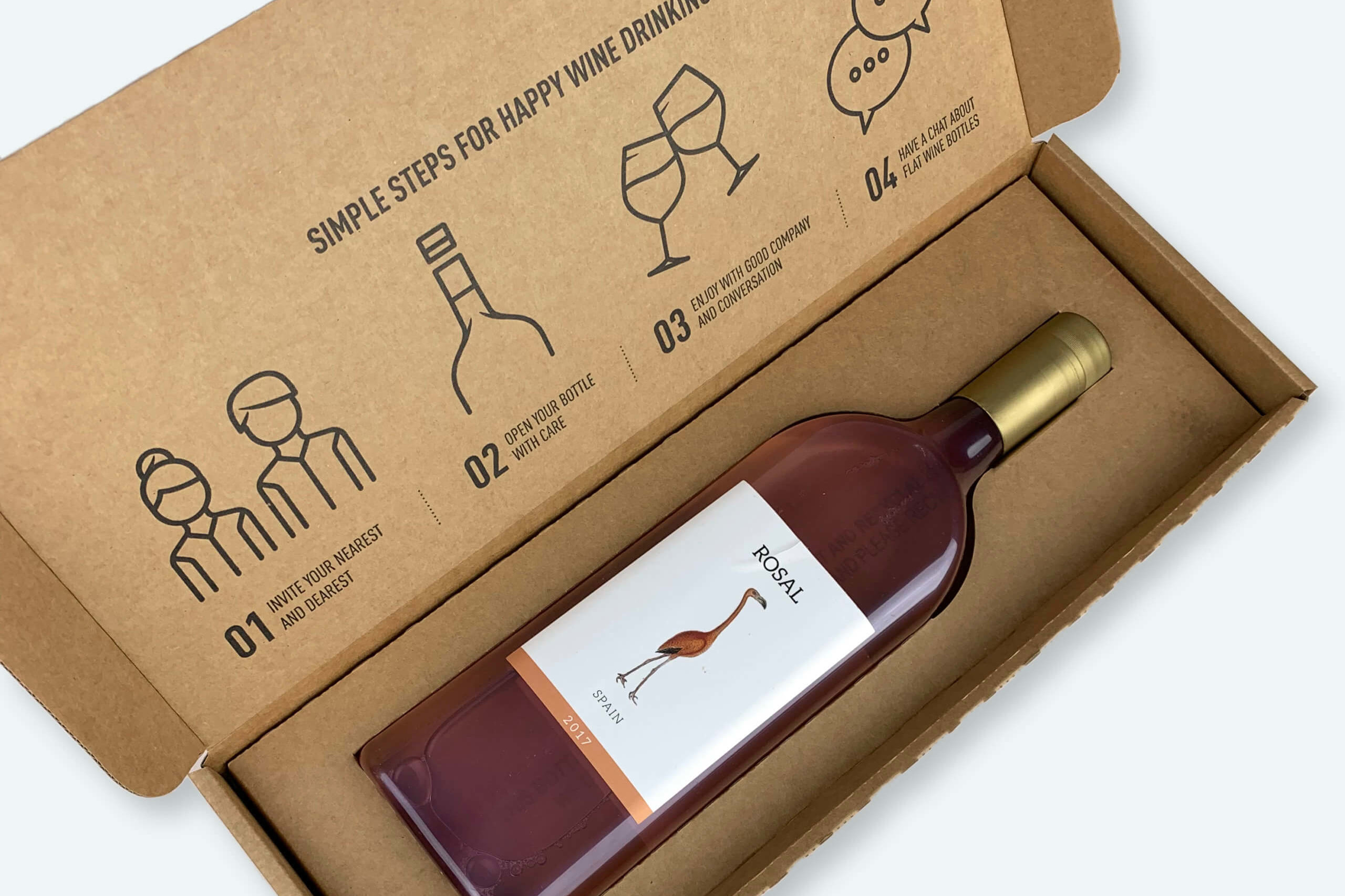
“Selling directly to consumers will complement rather than directly compete with sales in traditional retailers. It will facilitate repeat purchase, reinforce brand equity, and speed up product innovation for the future.”
WHAT ARE THE D2C OPPORTUNITIES FOR DRINKS BRANDS?
Although a ‘second wave’ of Covid-19 may not occur, local lockdowns are already a reality – and D2C can be one of the means to overcome supply chain disruptions. Beyond that, D2C can be significantly beneficial to Drinks manufacturers and brands in a number of ways:
To associate brands with Occasions: Thinking beyond brands, and into occasions. Associating with other brands and products that reinforce the occasions that are relevant to each brand in the portfolio (and, if possible, even bringing them into the platform). Bundling products together.
To drive Gifting: Filling the void left by Travel Retail post Covid-19 and developing appealing, premium, high added value gift options.
To short-cut Innovation: Using D2C as a platform to understand what consumers want and co-create / collaborate with them. Operating them as R&D labs, providing a ‘real time evolution’ of the product portfolio through instant consumer feedback.
To enhance Sustainability credentials: Using D2C to evidence sustainability credentials, through exclusive products, storytelling or promotional initiatives.
To bring the On-trade Excitement home: Enhancing the experience at home through special packaging, limited editions and activations (see Leyton Hardwicks’ recent post on LinkedIn). Rather than focusing on price discounts, offering consumers better ‘value for money’ instead – and a richer and more memorable experience that they will be willing to share in person and online.
Very importantly, selling directly to consumers will complement rather than directly compete with sales in traditional retailers. It will ultimately facilitate repeat purchase, reinforce the equity of brands in the eyes of the consumer, and speed up consumer relevant product innovation for the future.
The time is now!
Sylvia Lago, Head of Strategy at Drink Works.
Please get in touch to discuss further: sylvia@drinkworks.co.uk

